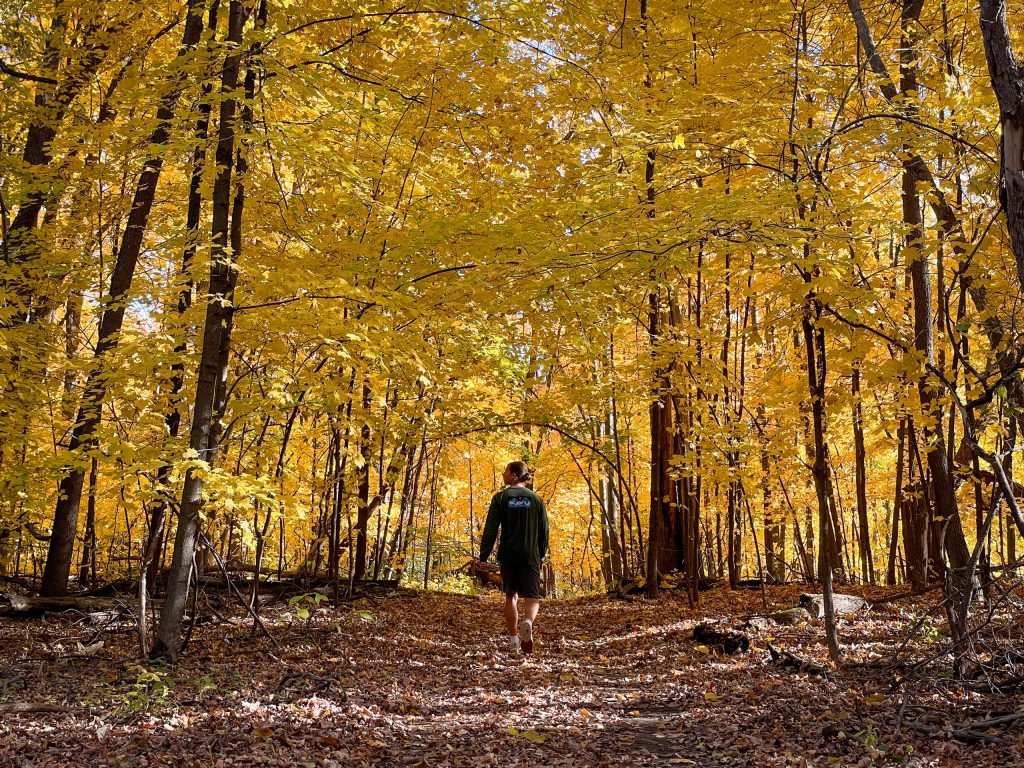Harmony with Nature: The Transformative Power of Outdoor Meditation
In this fast-paced, tech-driven world, it’s more crucial than ever to spend time outside. One of the best ways to decompress outside is meditation. I find that meditation outside is more beneficial than inside. It helps calm the body and mind from the craziness of school, work, or life and just be. Outdoor meditation is a wonderful way to remind ourselves that we are more connected to the earth than we know.
Benefits of Outdoor Meditation
Meditation is essentially a practice that centers on the interaction between body, mind, spirit, and environment. Studies have shown that meditation can help alleviate stress, anxiety, and depression, while also promoting emotional well-being. Nature tends to do what it wants when it wants. Outdoor meditation allows you to synchronize with the natural world. The sun rising and setting, moon phases, and the changing seasons can become a part of your own existence.
“It has been shown that spending time in nature promotes health, prevents health problems such as stress, depression, and anxiety, and improves immune functioning and interpersonal functioning” (Djernis et al.).
Sensory Meditation
Engaging in an outdoor meditation season is a great way to immerse oneself in a sensory experience. A great outdoor meditation technique is to sit on the ground outside, whether it’s the soft grass, grounding touch of dirt, or gentle sand. Now visualize roots spreading out, tapping into the steady support of the earth. This is a great way to recenter with the Earth’s energy and get a better focus on life.
The wonders of outdoor meditation extend beyond visualizations. When meditating outside, all five senses go into overdrive. As the breath is brought into the body, hear the rustling leaves, catch a whiff of that earthy smell, feel the sun’s warmth, taste the fresh air, and see the vibrant colors all around. This sensory experience fosters a connection that can resonate with your body and mind.
Studies have shown that the healing effects of outdoor settings have consistently revealed a sequence of emotional transformations. Kaplan and Talbot conducted a decade-long investigation into the experiences of young individuals on therapeutic backpacking journeys, documenting a clear pattern of change within participants’ daily journals (Kaplan and Talbot). What’s intriguing is that these emotional changes are reported not only during extended wilderness trips of seven to eleven days but also during brief meditation sessions from stressful situations lasting only thirty to sixty minutes (Francis and Cooper Marcus; Barnes). These stages can be summarized as follows:
- The Journey: This stage involves a transition from a location associated with stress, grief, anger, etc., to a place that the individual consciously or unconsciously believes will induce a better state of mind or facilitate a new experience.
- Sensory Awareness: At this point, individuals become attuned to new sights, sounds, smells, and other sensory experiences, becoming increasingly engaged with these stimuli.
- Self-Centering: This stage revolves around refocusing on internal emotional processes, discovering inner strength, and gaining a fresh perspective on personal problems.
- Spiritual Connection: The final stage is characterized by a profound awareness of the interconnectedness between oneself and the environment, fostering a sense of wholeness, belonging, and liberation.

Research conducted by Herbert Benson and his colleagues in 1994 on the “relaxation response” discusses healing environments and the mood changes that occur when individuals are deeply relaxed. Benson identifies four essential elements for eliciting the relaxation response:
- A tranquil environment with minimal external stimuli.
- An object to dwell upon, which can be a silent repetition of a sound, word, or phrase or fixed
gazing at an object (e.g., a candle or symbolic item). This serves to shift focus from logical
thought to a more receptive awareness. - A passive attitude is where distracting thoughts are disregarded, and attention returns to the
chosen technique - A comfortable physical posture that will allow an individual to remain in the same position for at least twenty minutes. (Benson 78-79).
The benefits of outdoor meditation extend beyond stress relief and emotional well-being; they encompass a sensory experience that deepens our connection with the earth. The emotional transformations experienced during outdoor meditation, as supported by research, highlight the profound impact of nature on our inner peace. Step outside and disconnect from the chaos of life, embracing a moment of pure existence. Absorb the wonders of the world that surround us and stimulate a deep sense of appreciation for the beauty that we are fortunate to have in our lives.
Sources
Benson, Herbert, and Mirian Z. Klipper. “Ch. 5.” The Relaxation Response, Morrow, 1975, pp. 78-79.
Djernis D, Lerstrup I, Poulsen D, Stigsdotter U, Dahlgaard J, O’Toole M. A Systematic Review and Meta-Analysis of Nature-Based Mindfulness: Effects of Moving Mindfulness Training into an Outdoor Natural Setting. Int J Environ Res Public Health. 2019 Sep 2;16(17):3202. doi: 10.3390/ijerph16173202. PMID: 31480748; PMCID: PMC6747393.
Marcus, Clare Cooper. “Nature as Healer: Therapeutic Benefits in Outdoor Places.” NA, 1997, arkitekturforskning.net/na/article/view/585/533.
You must be logged in to post a comment.